During my breakfast in Sioux Falls of egg, sausages, mandarin orange and banana, the talking head on AG TV said, “Grassland is a natural resource: it’s good for carbon capture and erosion prevention.” I had wondered about all the grassland I’d been seeing, whether it would eventually be converted to crops, but apparently it has a value of its own.
At 8:07, as I got underway, it was 57°F. A sign for the World’s Only Corn Palace at Exit 332 told me I was on the right track. Soon there was nothing but rain in all directions. I took I-29N to I-90W, passing signs for 1880 Cowboy Town, Buffalo Ridge, Humboldt Bar and Sunshine Foods. A damp ozone smell hung in the air. I passed The Tumbleweed, Prairie Village, and the Vermillion River.
Along the road, I saw a rusty metal horse and a huge longhorn steer head. These were part of Porter Sculpture Park, a collection of over 50 welded metal sculptures, the vision of artist and farmer Wayne Porter. They are comprised of old scrap metal and disused agricultural and railroad equipment.
Then the signs began, especially the ones for Wall Drug, which lay further west along I-90W. I wouldn’t be heading there just yet. SOLD FOR SEX: IT HAPPENS HERE. WALL DRUG, AS TOLD BY GOOD MORNING AMERICA. FREE ICE WATER: WALL DRUG.
Wetlands abounded. The bones of an old teepee structure identified a rest area, where I stopped for a break.
STOCK UP ON CORNY SOUVENIRS. HOME OF LAURA INGALLS WILDER. DE SMET EXIT 350. WESTERN BRONZE DISPLAYS: WALL DRUG. LEATHER GOODS: WALL DRUG.
There were signs for The Tumbleweed. Emery. Farmer. Double T Leather. Cattleman’s Club. Fatima Family Shrine in Alexandria. Second Impression Palace: Antiques. RUN WILD: WALL DRUG. “Suddenly it’s like new” – Dick’s Body Shop.
Cattle grazed placidly along the highway. The Kongo Klub advertised itself as a Gentleman’s Club. I passed the Twin Dragon Chinese Restaurant and then crossed the James River, taking 37S to Mitchell, South Dakota.
******
I arrived at the World’s Only Corn Palace by 9:20. The 2018-2019 theme was “Salute to Military.” The World’s Only Corn Palace is decorated each year with thousands of bushels of corns, grains and native grasses.

The World’s Only Corn Palace 2018 Salute to Military 2019
While much of the Midwest suffered from drought in 1887, Sioux City, Iowa looked like a green oasis in the middle of the desert. Abundant rainfall had produced excellent crops for over a decade. The city was the third largest meatpacking center in America with over 30,000 inhabitants. To celebrate their prosperity, citizens conceived the idea of a corn palace. In August 1887, the Sioux City Daily Journal noted, “St. Paul and Montreal have their ice palaces, which melt at the first approach of spring, but Sioux City is going to build a palace of the product of the soil that is making it the great pork-packing center of the northwest.”
From the 1880s to the 1930s, at least 34 “prairie palaces” sprang up in 24 towns across the Midwest. Entrepreneurs pummeled the newspapers with exaggerated claims of life on the prairie. Communities sprang up along railroad lines and experimented with the artistic nuances of grasses and grains while celebrating what was essential to their livelihoods. These palaces brought attention to the unique promise of each locale. However, only one prairie palace has endured – the “World’s Only Corn Palace” in Mitchell (from a plaque at the Corn Palace).
In 1892, Mitchell had less than 3,000 inhabitants. It had dirt roads, wooden sidewalks and gas lamps. The Corn Belt Real Estate Association, a multi-county organization, wanted to promote further settlement in the region and envisioned a harvest fall festinal. The demise of the Sioux City Corn Palaces in Iowa presented inspiration and opportunity.
On September 28, 1892, the first Corn Belt Exposition opened. Special trains brought potential land buyers at reduced fares. The Iowa State Boys Band provided music and the sixteen counties provided agricultural exhibits. The exposition attracted attention to Mitchell, the Corn Belt and the state. Remarkably the organizers profited despite the dismal economic climate.
The World’s Only Corn Palace was built in 1892 and was designed as a Moorish Revival Building: “supersized seed art meets the Taj Mahal of the Great Plains,” is how it is described in The Dakotas Off the Beaten Path: A Guide to Unique Places.
Its debut occurred with Mitchell’s first Corn Belt Exposition. At that time, Aberdeen had the Grain Palace and Rapid City had an Alfalfa Palace, and more than twenty other towns also had palaces, but only the Mitchell Corn Palace survived.
Inside was a showcase of Oscar Howe (1915-1983), one of South Dakota’s most revered artists. He was born on the Crow Creek Indian Reservation in South Dakota and was a full-blooded member of the Yankonai Sioux of the Dakota Nation. Having developed a skin condition as a youngster, Oscar became a recluse to avoid those who would tease him, but he found enjoyment in drawing. He was a graduate of Dakota Wesleyan University. Oscar Howe drew many of the panels for the murals over the years, from the 1948 Indian Theme to the 1971 Mother Goose Rhymes.
Inside the Corn Palace I found a decade-by-decade history of political and social events and themes of the Corn Palace. There were also photos of the Corn Palace throughout the years.
Farmers plant twelve different colors of corn for the murals. To decorate the palace requires 275,000 ears sliced in half and nailed to the Corn Palace Walls. The murals are “accented with other locally grown grains and grasses that include: bundles of ryegrass and sour dock, bromegrass and bluegrass, wild oats, rye, straw and wheat,” according to The Dakotas Off the Beaten Path.
Local pigeons and squirrels begin to devour the murals after Corn Palace Week in late August.

details of panels Mitchell Corn Palace

details of panels Mitchell Corn Palace

details of panels Mitchell Corn Palace

The Corn Palace also serves as a multi-use center for the community and the region with stage shows as well as sporting events. It is home to the Dakota Wesleyan University Tigers and the Mitchell High School Kernels basketball teams.
Inside can be found corn ceramics, corn husk dolls, and other corn-related items.
In the Gift Shop, I bought some Tree of Life earrings, a magnet, and postcards. Across the street from the Corn Palace was Valtiroty Shiloh’s Tabernacle, which was said to include a Bible Land walk-thru, a Hebrew Tabernacle model, a tableaux from the 12 tribes of Israel, and a jungle room for the kids. I didn’t go inside.
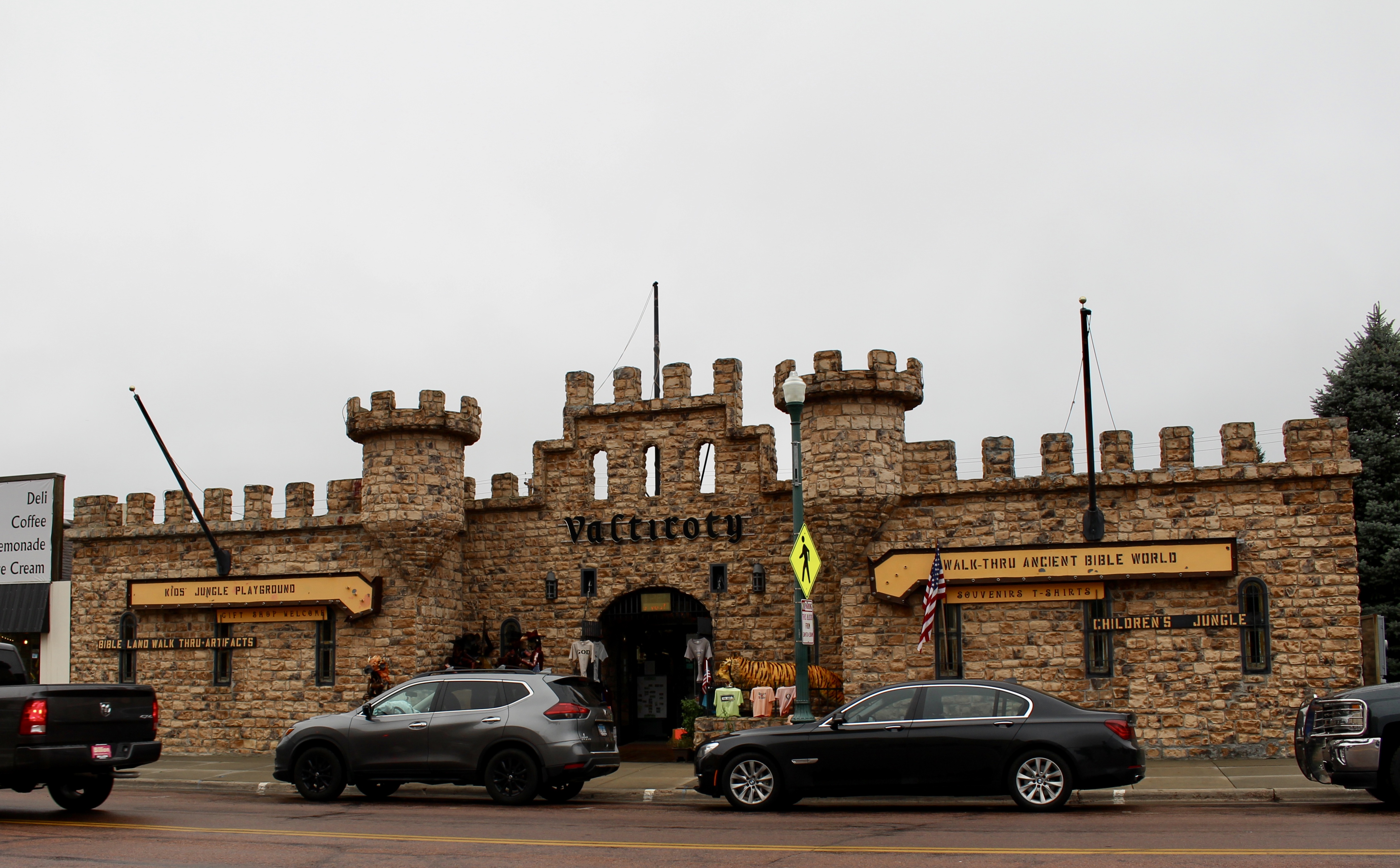
Valtiroty
I was on my way to visit Laura Ingalls Wilder.
********
On 37N, I passed Lake Mitchell and finally the rain had let up, although the skies were still low, gray and woolly. I passed a lot of lakes, waterways, gently rolling terrain and cornfields. Greenfield was dotted with hay bales. Hank Snow sang “I’ve Been Everywhere.”
Soon the land had flattened out and I found corn, tumbledown barns, and more ponds, lakes and wetlands around the James River. I was welcomed to Artesian. I wondered how people have so many interesting ideas and organize and put them into action. I listened to Mama Mia! as I drove through more cornfields and muddy land. I passed Fedora and the Kieffer Oil Company. Now that I was heading east, the rain picked up. A dead skunk lay in the road and a stench effervesced around him like a halo.
Giant silos rose up out of the landscape ahead. I felt like I was approaching Oz in The Wizard of Oz. In Howard, I stopped for gas and some Cool Ranch Doritos. As I headed on 25N, sheep with black tails and black feet stared at me. At Lake Carthage, cows and corn dotted the land. A sign informed me that INTO THE WILD WAS FILMED IN THIS AREA. I found that hard to believe. The Mama Mia! characters were singing “Gimme! Gimme! Gimme! a man after midnight,” someone to “chase the shadows away.” White cows lay resting in a field.
********
I arrived in “De Smet: Little Town on the Prairie (pop. 1,082)” at 11:30. I visited the Ingalls Home & Museum, which bills itself as the real setting for Little House on the Prairie. As it was Sunday, the main house and museum were closed, but I walked around the grounds.
Laura Ingalls Wilder (1867-1957) moved here as a child in 1879 and this prairie town figured prominently in six of her pioneer adventure books.
The Surveyor’s House is the oldest building in De Smet, built a year before there was even a town. It was built around 1879 as a railroad company house. It originally stood on the north shore of Silver Lake until it was moved to town in 1884.
According to Pa’s journal, the Ingalls family moved in to this house on December 1, 1879. The family spent their first winter here, the house often serving as a hotel for the many homesteaders coming through the area. Laura wrote of the many experiences of that first winter in her book, By the Shores of Silver Lake.

Railroad Surveyor’s Shanty
The first school of De Smet was built in 1880 by the citizens. They not only furnished the materials but actually did the work. Laura Ingalls Wilder attended this school as a child.

Laura’s childhood schoolhouse

Laura taught her first term of school at a very young age (just under 16). The Brewster School was located twelve miles southwest of De Smet and proved to be a trying experience for Laura. She lived with the Brewster family and one night awoke to find Mrs. Brewster threatening her husband with a knife.
Some of her students were older and taller than she was, and she had to sleep away from home for the first time. Laura was miserable, but every Friday, no matter what the weather, Almanzo Wilder arrived to take Laura home to her family for the weekend. Laura was determined to finish the term of teaching as the money she earned would help send Mary to the college for the blind in Iowa.
On the grounds was a replica of Brewster School.
The final house Pa built for the family in 1887 after giving up the homestead now serves as the museum in the complex, but it was closed.

Ingalls home after 1897
This prairie schooner is a typical wagon that pioneers would have used in the late 1800s. Oxen were the most reliable draft animals to pull pioneer wagons. They could survive well on poor grass, were less expensive than horse and their strength was welcomed when it came time to pull the plow through the dense prairie sod on the newly acquired homestead. Once on the road, the wagon might travel 15-20 miles per day. A team of horses pulled the Ingalls family across the prairie.
This was a “barn find” in Iowa and was restored by the Hansen Wheel and Wagon Shop in Lechter, SD. Based on the wagon’s wear and tear, it was most likely used for only about 10 years, leaving it in good condition for its age.

The public bathrooms said MA and PA and, stupidly, I thought it was an abbreviation for Maryland and Pennsylvania until I saw that Wilder called her parents Ma and Pa. Sometimes I don’t have a lick of sense! 🙂 Obviously, I never read the Little House on the Prairie books! 🙂
*******
The Ingalls Homestead is the actual land the Ingalls homesteaded in 1880. I looked through the cute shop at the Little House on the Prairie books and thought I’d surely buy the set and read it to any granddaughter I ever have, but at this point I wonder if I’ll ever have any grandchildren.
I enjoyed a bird’s eye view from the lookout tower.

birds eye view of Ingalls Homestead

I saw the hay roof barn and Ma’s little house – a reconstruction of the Ingalls’ claim shanty built by Charles Ingalls in the spring of 1880. He got the land under the Homestead Act.
According to Homestead National Monument of America, which I would visit later in my trip, The Homestead Act was signed into law in 1862 by Abraham Lincoln.
This Act turned over vast amounts of the public domain to private citizens. 270 millions acres, or 10% of the area of the United States was claimed and settled under this act.
A homesteader had only to be the head of a household or at least 21 years of age to claim a 160 acre parcel of land. Settlers from all walks of life including newly arrived immigrants, farmers without land of their own from the East, single women and formerly enslaved people worked to meet the challenge of “proving up” and keeping this “free land”. Each homesteader had to live on the land, build a home, make improvements and farm for 5 years before they were eligible to “prove up”. A total filing fee of $18 was the only money required, but sacrifice and hard work exacted a different price from the hopeful settlers.
Charles Ingalls built a 16’x24′ hayroof barn into the hillside west of the claim shanty. He specified the dimensions and the hayroof in his homestead proof papers. The Ingalls family often referred to it as a stable.
The hayroof barn sheltered the horses, Sam and David, the cow, Ellen, and the chickens Ma received from Mrs. Boast.
A manure spreader is a farm implement that distributes manure over a field as fertilizer. Manure spreaders like the one here are ground-driven, meaning that as the wheels turn they power the chain and beaters, which move the manure through the wagon.
A wildflower display showed typical prairie flowers, such as Wild Bergamot, or beebalm, purple and white Prairieclover, Showy Partridgepea, Compass Plant, Pitcher Sage (Blue Sage), and Black-eyed Susan, New England Aster, Plains Coreopsis, Dwarf Red Coreopsis, Greyhead Coneflower, and Butterfly Milkweed.
The livestock barn sat on the grounds.
I walked around Flindt’s Garage, and through the cornfield and native grass prairie to the West Bethany Church, built in 1905. The church was originally located 10 miles from the Ingalls homestead. Pa Ingalls met all the requirements necessary to make a claim to the land: he had to build ta home, farm a certain number of acres, etc.
The Native Grass Prairie consisted of Big Bluestem, Little Bluestem, Western Wheat, Side Oats Grama, Blue Grama, and Green Needle Grasses.
The Ingalls farm is on the western edge of the tallgrass prairie region.
I walked back across the homestead and made my way past the native grass prairie, the ten acres of cropland (corn, oats and wheat), past the livestock barn and the wildflower display.

Ma’s Little House
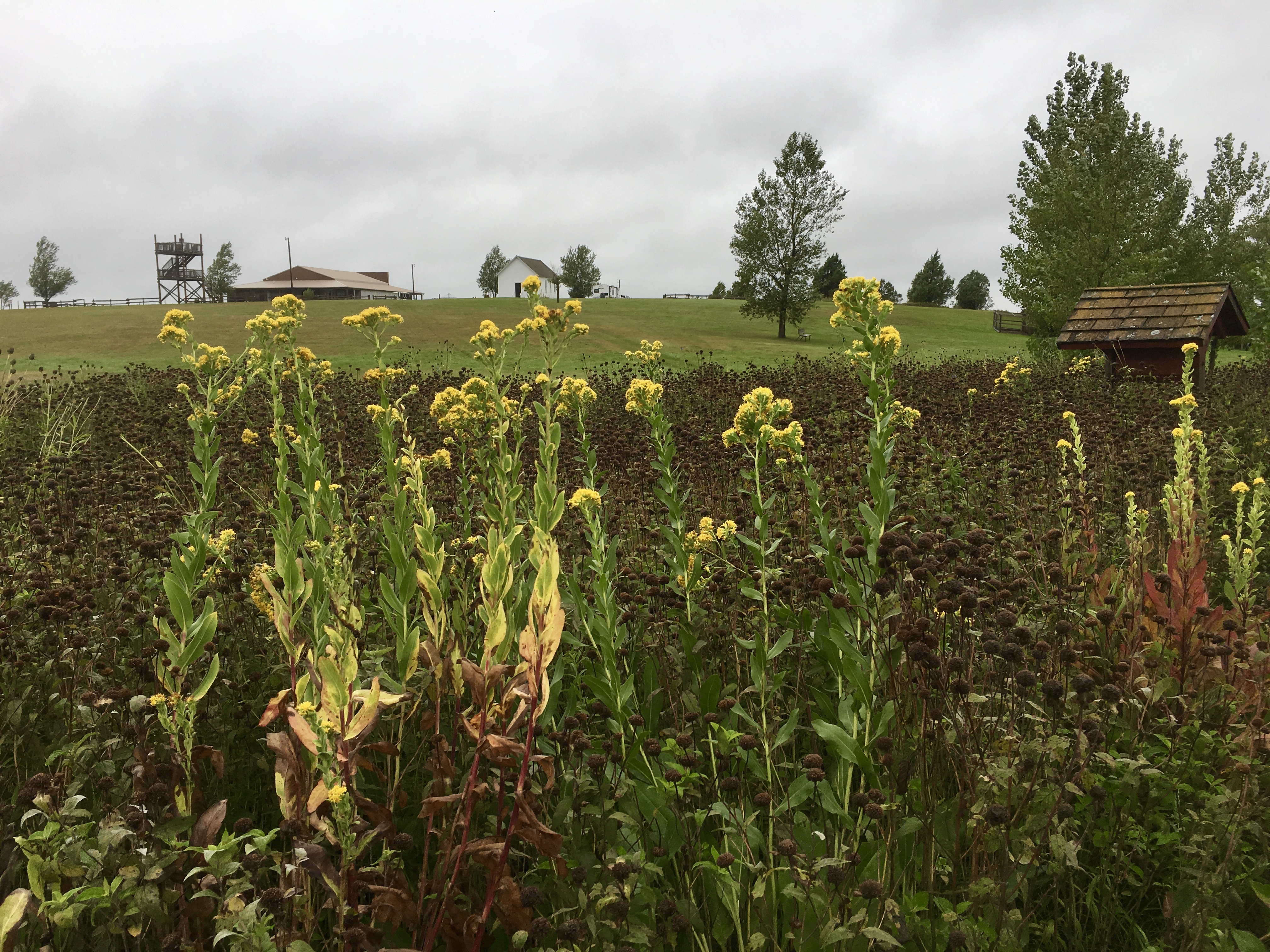
wildflower display

Ma’s Little House
I stopped into Laura’s Travel Exhibit, which tells about the covered wagon travels of the Ingalls family across the Midwest.
By this time, it had started raining more heavily, so I hopped in my car and was on my way to Brookings, South Dakota.
*Sunday, September 8, 2019*
























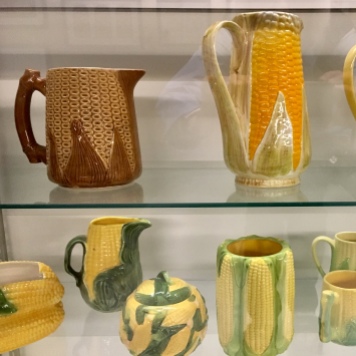



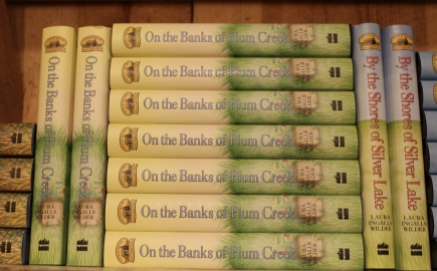













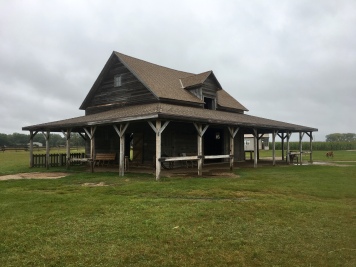










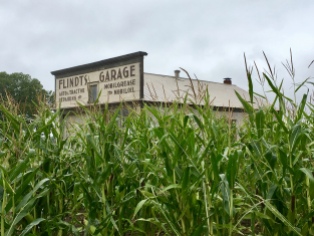







What an extraordinary building is the Corn Palace, Cathy! 12 colours of corn- I didn’t know there were so many 🙂 🙂 America the beautiful! She has no excuse for her current situation.
LikeLiked by 1 person
I honestly didn’t know there were so many colors of corn either, Jo. I agree, America is a mess, and I’m stuck in the middle of it. Ugh.
LikeLike
🤗💕💕
LikeLiked by 1 person
Thanks for the evocation of Laura Ingalls, it is good to remember that these children’s stories are based on a rather harsh experience, the reality of pioneer life was not easy.
LikeLike
I’m glad you enjoyed my evocation of Laura Ingalls. I never read any of her books, but I am well aware of her. The pioneers had so many challenging and harsh experiences. I can’t believe how hardy they were!
LikeLiked by 1 person
The Corn Palace looks amazing.
LikeLike
It was certainly interesting, Albert. I am always surprised by the things people in small towns take pride in. 🙂
LikeLiked by 1 person
I feel small towns have to have something unique or very distinctive these days to attract people.
LikeLike
I think you’re right, Albert. Some small towns are so far gone, they don’t really have much to hang on to, so I find it hopeful when towns have enough pride to hang on to something unique. 🙂
LikeLiked by 1 person
Amazing, that Corn Palace! And thanks for taking me on the rest of the trip and the interesting information.
Have a wonderful day,
Pit
LikeLike
So, did you make it to the Corn Palace, Pit. It wasn’t that far from Sioux Falls. I’m glad you enjoyed learning about this wild place! You have a wonderful day too. 🙂
LikeLike
I haven’t read the Little House books either, but I think the museum would still be an interesting place to visit to find out about the way of life. The Corn Palace is – eccentric!
LikeLike
Eccentric! That’s the perfect word for the Corn Palace. Lots of crazy things in the Dakotas. I would like to read those books to a granddaughter one day, but who knows if I’ll ever have one. Probably not at the rate things are going!
LikeLiked by 1 person
Hope your kids are doing OK, any news from the youngster?
LikeLike
They’re doing okay, thanks, Jude. The youngest is still in Nicaragua but he said he’s been contemplating coming back and living the van life again. That didn’t work out so well for him in the past, so I hope he stays in Nicaragua. I think all the stress he caused me last year and early this year wreaked havoc on my health. I don’t want him under my roof again and having to deal with all that stress.
LikeLiked by 1 person
I can understand that. Much as we love our kids, sometimes we have to do what is best for us. I wouldn’t have thought it would be easy for him to return to the US at the moment.
LikeLike
I think he can return, but he can’t decide if he wants to or not. 🙂
LikeLiked by 1 person
Oh, well. He’s an adult so even though it is difficult to stop worrying about him you simply have to get on with your own life. And maybe the USA is not the best place for him right now anyway. Too much tension and too little work I expect.
LikeLike
Yes, you’re right on all counts, Jude. 🙂
LikeLiked by 1 person
Like others have commented that Corn Palace is astonishing! I agree with Jo. What has happened to America the Beautiful? Let’s hope things will be better by the end of the year.
LikeLike
The Corn Palace is a crazy piece of work for sure. Well, as for America the Beautiful, it still has its pockets of beauty but until Trumpism is dead, which I hope it will be someday soon, we will remain in darkness. Even if he loses the election, which I hope to God he does, there are still his right-wing supporters who want to wreak havoc on this country. They are disgusting, and it makes me ashamed to be an American right now.
LikeLiked by 1 person
It can’t be easy. I do not understand how anyone can support that man.
LikeLike
He disgusts me with every ounce of my being.
LikeLiked by 1 person
I read all the books by Laura Ingalls Wilder to my daughters when they were little. It took us many months to get through the whole series and it was a special treat before bedtime every night. I would love to visit the town and museum.
LikeLike
Wow, how nice that you read the entire series to your daughters, Carol. That must have been a very special experience. I guess I could always read them on my own, but I think the shared experience with a young person would be more satisfying. 🙂
LikeLiked by 1 person